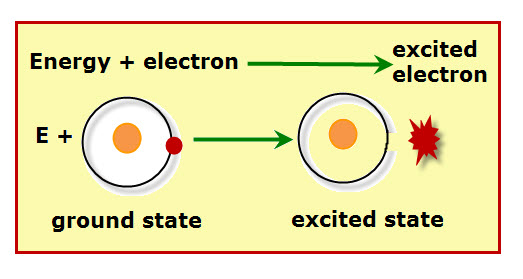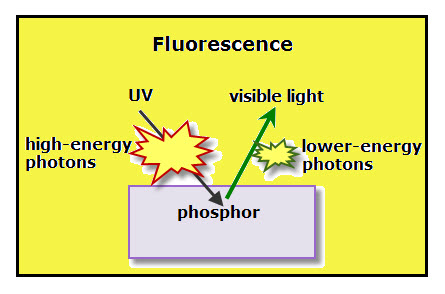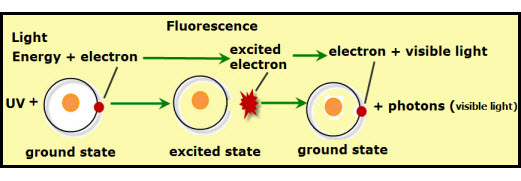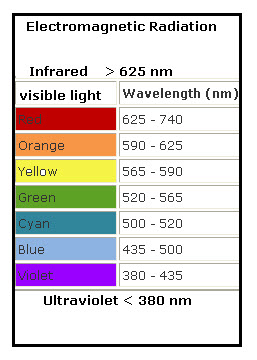20% Discount Code AFF20 Physics is a natural science that involves the study of : 1. matter and its motion through spacetime 2. concepts related to matter and its motion, including energy and force Janice VanCleave’s Physics for Every Kid: 101 Easy Experiments in Motion, Heat, Light, Machines, and Sound […]
How is Visible Light Produced?
Light is a form of energy, and energy is neither created nor destroyed. Instead, energy can change from one type to another.This means that another type of energy is transformed into visible light. Regardless of the source of energy, light is produced in basically two steps: 1. An atom’s electron absorbs energy and becomes energized, […]
Fluorescence
Question: What causes some objects to glow under a black light? Black lights give off Ultraviolet A light, which is a type of high-energy invisible light (radiation). Photons are packets of light energy. UV light photons have a higher energy than do the photons for visible light. Materials that glow under a black light contain […]
Fluorescence vs. Photoluminescence
Fluorescence and Photoluminescence are types of luminescence (cold light) where the energy is supplied by EMR (electromagnetic radiation). EMR from most to least energetic are: gamma rays, x-rays, ultraviolet light, visible light, infrared light, microwaves, and radio waves. The starting EMR energy source needed to produce visible light must be more energetic than visible light. […]
Positive and Negative Charges
The American scientists and statesman Benjamin Franklin (1706-1783) named the two natural forms of electric charges. He called one a positive charge and the other a negative charge. A charge (electric charge) is the property of subatomic particles within atoms that causes a force between the particles. The force between charged particles is called an […]
Phosphors
Question: Why do scorpions glow under a black light? Answers: The scorpion has phosphors in its exoskeleton. A phosphor is a term used to describe any substance that can absorbs UV radiation and release visible light. Both UV radiation (light) and visible light are forms of electromagnetic radiation-EMR. The UV light has much higher energy […]
Why Glass is Transparent to Visible Light
In order to see anything, light must enter and be absorbed by the special light sensitive cells inside your eyes. These special cells called cones and rods are only sensitive to visible light, which are electromagnetic waves with wavelengths from 380 nm to 740 nm. While the term light is commonly thought to mean visible […]
Pendulum: A Swing
Free Kindergarden science experiments related to pendulums. Experiments can be done in a children’s outdoor playground that has swings.
Teaching about Gravity using Science Magic
Using gravity you can cause an unattached rope to seemingly lift a bottle. As with all magic–its a trick. In this trick, gravity is used to pull a ball into place so that it presses so hard against the rope that it cannot move. 1. Ask an adult helper to cut a slit in the […]
Pendulum
How to Design Experiments
Directions for using simple experiments as a foundation for designing new experiments.
- « Previous Page
- 1
- …
- 9
- 10
- 11
- 12
- 13
- …
- 16
- Next Page »







